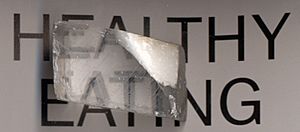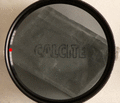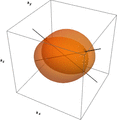Birefringence facts for kids
When light passes through certain special materials, something amazing can happen: it splits into two separate rays! This cool effect is called birefringence, or sometimes double refraction. It means you see a "double image" of whatever is behind the material.
Think of it like this: a prism can split white light into all the colors of the rainbow. Birefringence, however, splits light into two images of the *same* color.
Contents
What is Birefringence?
Birefringence happens because of how light travels through some materials. In these special materials, light moves at different speeds depending on its polarization. Polarization describes the direction in which light waves vibrate.
Because the light travels at different speeds, it bends differently. This causes one ray of light to follow one path and the other ray to follow a slightly different path. The result is that you see two images instead of just one!
How Light Splits
Imagine a light ray entering a material like a calcite crystal. Instead of just one ray coming out, two rays emerge. These two rays are polarized in different directions.
One ray is called the "ordinary" ray. It acts like light in normal materials. The other is the "extraordinary" ray. It behaves differently because of the crystal's unique structure. This difference in behavior is what creates the double image.
Where Can You See Double Images?
The most famous example of birefringence is with calcite crystals. If you place a calcite crystal over a word on a page, you will see two copies of the word! This makes calcite a great way to show how birefringence works.
Another material that shows this effect is boron nitride. Many other crystals and even some plastics can also show birefringence, especially when they are under stress.
Why is Birefringence Useful?
Birefringence isn't just a cool trick; it's also very useful! Scientists and engineers use it in many ways.
For example, it helps in making special polarizers and optical instruments. It can also be used to study stress in materials, which is important for designing strong and safe structures.
Images for kids
-
A calcite crystal laid upon a graph paper with blue lines showing the double refraction
-
Color pattern of a plastic box with "frozen in" mechanical stress placed between two crossed polarizers
See also
 In Spanish: Birrefringencia para niños
In Spanish: Birrefringencia para niños









